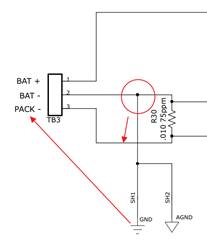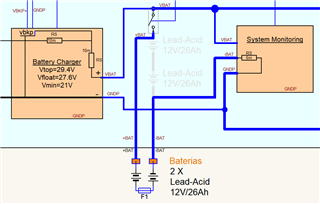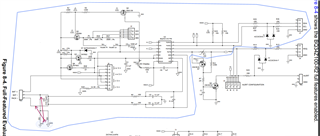Other Parts Discussed in Thread: BQ34Z100EVM
Tool/software:
In the EVM schematic you can see that GND and AGND are placed on BAT-. But I think it would be better to put it on PACK-, so that the "GND" would be at the same point as the charger and the reader circuit (processor). What do you think?
Can Texas supply the Sch/Pcb in CAD format?
Thanks in advance for your answer.
Mauricio.




